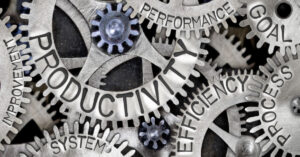U.S. manufacturing production, which had been slowly declining for decades, saw its lowest point during the Great Recession of 2008-2009. Since then, however, the sector has seen a strong rebound.
Two reasons often cited for the decline are offshoring and the slow adoption of innovative technologies. Let’s take a look at these factors one at a time.
Offshoring
U.S. manufacturers were lured to offshoring, moving their operations to countries where labor and materials were cheap, as a means of cutting their costs and thereby increasing profit margins. Much like the California Gold Rush of 1848, the reality was often less profitable than the dream, as U.S. companies faced unforeseen language barriers, cultural barriers, lax quality controls, corrupt bureaucracies, unstable governments, punitive tariffs, and most recently, enormous, often arbitrary freight rate hikes.
Reshoring and Nearshoring
While some companies persisted and managed to do offshoring work to their advantage, the constraints became too much to bear for many others. And the result was a growing trend toward reshoring, i.e., bringing manufacturing back home to the good old U.S. of A. And that resulted in a steady growth of manufacturing employment.
There was also a trend toward nearshoring, mainly to Canada and Mexico. While nearshoring does not create more U.S. jobs, it does alleviate many of the problems associated with offshoring.
Adoption of New Technologies
At the same time, U.S. manufacturers woke up to the need for deploying innovative technologies. Robotics and human-robot collaboration technologies were taking off and becoming more affordable. The same was true for modern ERP (Enterprise Resource Planning) software that integrated manufacturing operations with Inventory Management (IM), Warehouse Management Systems (WMS), and Supply Chain Management (SCM).
In addition, greater levels of automation and digital transformation (DT) were made possible with new smart sensor technologies, AI (Artificial Intelligence), and the IIoT (Industrial Internet of Things).
Digital manufacturing has created a production landscape in which products, processes, and material flows can be continuously optimized based on real-time data, giving manufacturers the tools to respond with agility and flexibility to new business models, diverse customer requirements, and changing market conditions.
Manufacturing Comeback
While some analysts are still dubious, data suggest that the manufacturing sector is exhibiting greater underlying strength beyond what would be expected in a normal cyclical rebound. Analysts point to several favorable conditions:
- Weaker currency
- Lower domestic energy prices
- Volatile international shipping costs
- Significant increases in labor costs in emerging markets
- Growing demand from booming shale oil and gas activity
- The “Made in America” movement
All of which supports a steady increase in U.S. manufacturing output and employment.
Manufacturers: Delight and Take the Next Step…
For more information about ERP for manufacturing, contact Basileia Consulting Group (BCG) by calling 949-329-3524 or via our contact form so we can get acquainted!




